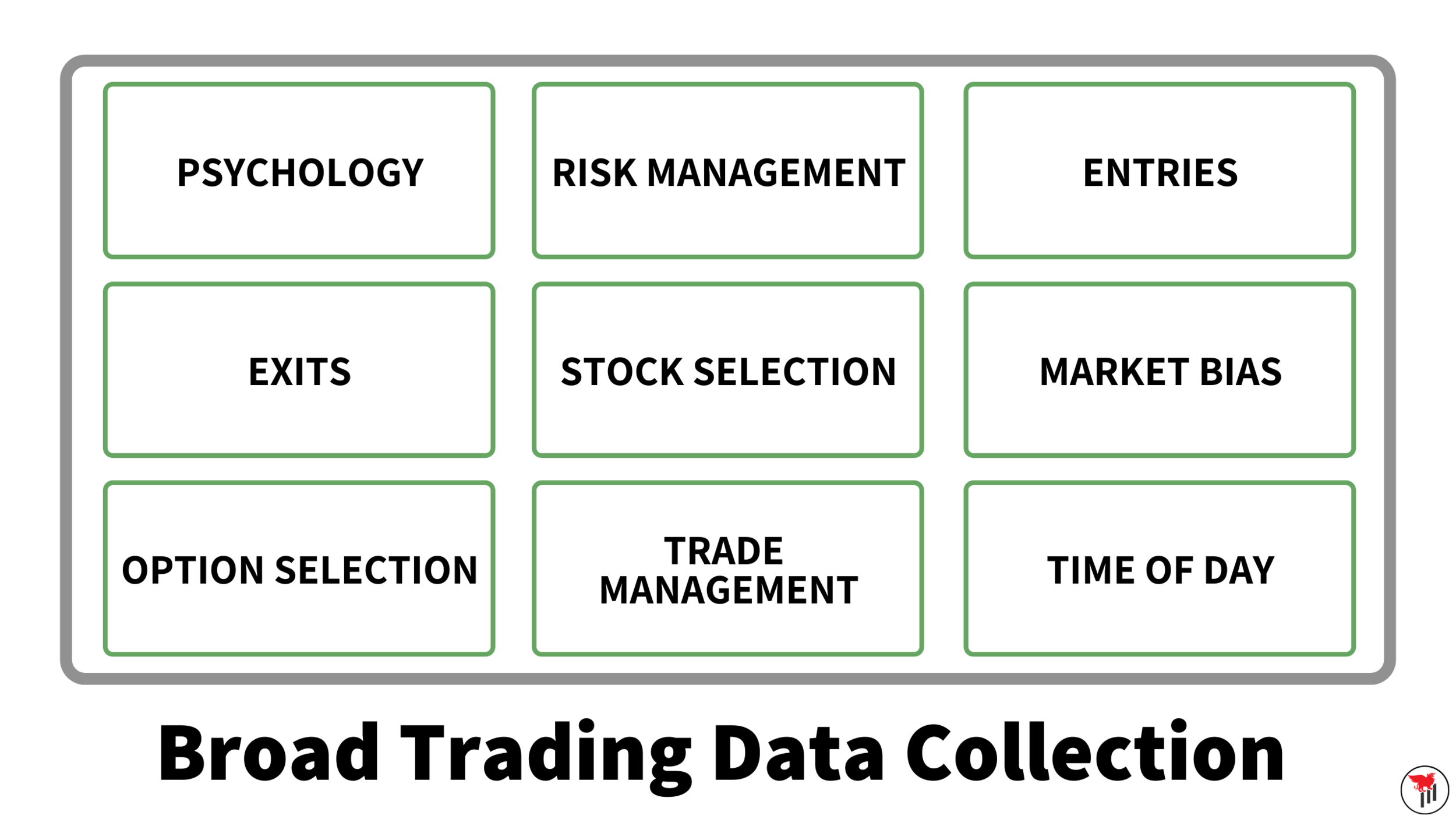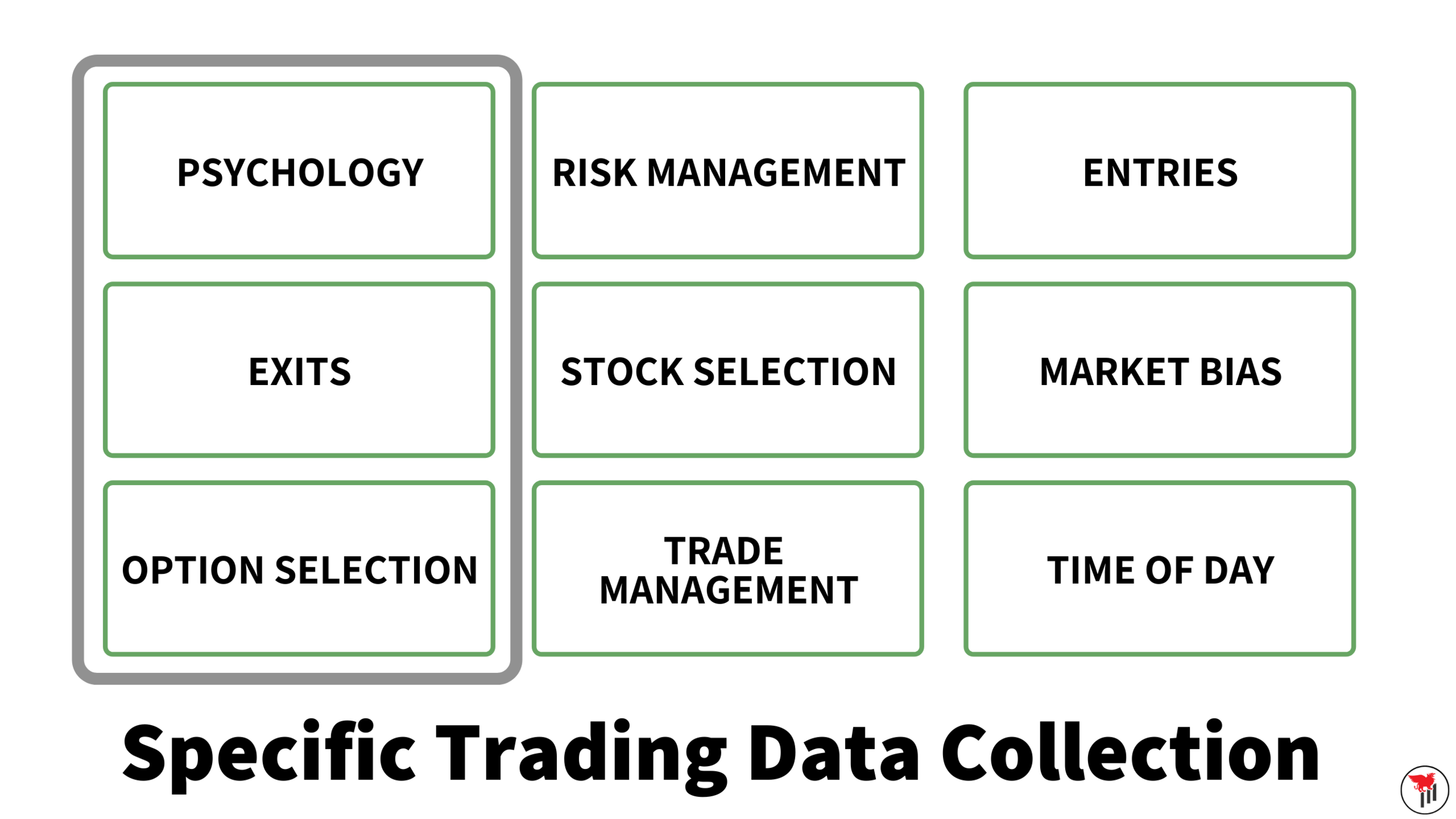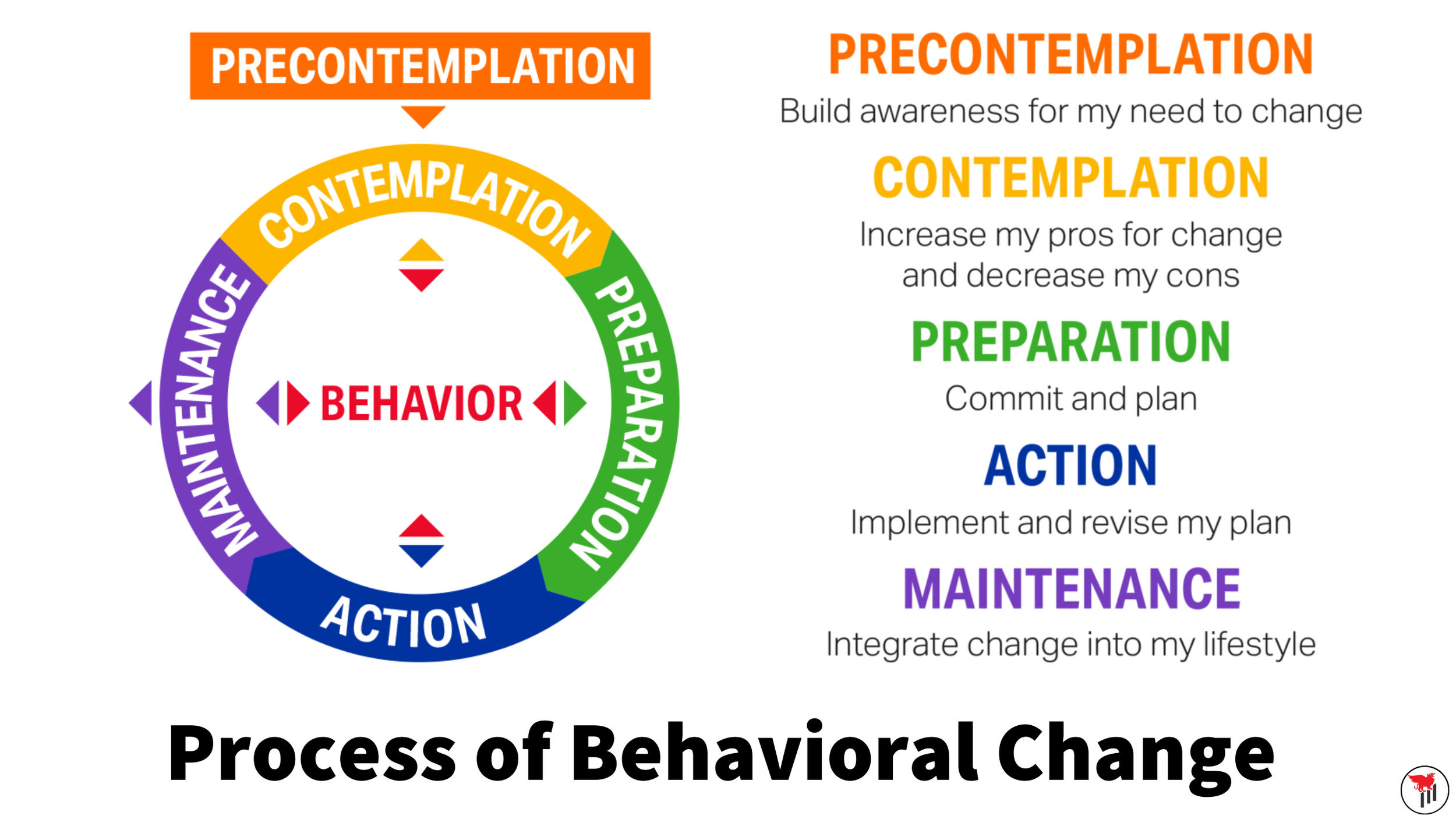Daily Trade Review - Why You’re Probably Doing It Wrong
Perhaps the Most Important Part of a Trader’s Process
I recently posted a brief Twitter thread about keeping and maintaining a trading journal, and it got me thinking more deeply on the subject. What is it about a trading journal, and the trading review process that is so imperative to a trader’s success?
“One cannot become a trader by giving the ticker absent treatment; nor by running into his broker's office after lunch, or seeing ‘how the market closed’ from his evening newspaper. He cannot study this art from the far end of a telegraph or telephone wire. He should spend twenty-seven hours a week at the ticker, and many more hours away from it studying his mistakes and finding the ‘why’ of his losses.”
Richard Wyckoff
The entire purpose of a daily trade review is to collect behavioral-performance data around specific actions that you complete on a daily basis - These actions may or may not be directly related to trading. This write up should help to provide guidance on how to structure the daily journaling and data collection. The main function of daily trade review and journaling is to uncover any problem areas that you can then put more attention towards resolving.
In my experience coaching and mentoring traders, there are often very specific issues present with each trader. The majority of traders have specific clusters of weaknesses that negatively impact performance, rather than broad-based trading weakness.
The Pareto Principle (80/20) applies here - A trader will commonly do well in 80% of the performance aspects (risk management, analysis, entries/ exits, psychology, etc) but there will be a relatively small issue within their process which is making it challenging to be profitable.
In some cases, the issues impacting performance will be visible quickly. However, in most cases the issues impacting performance have underlying secondary factors. One example of this would be that a trader needs improvement on their entries (primary performance issue) but also focuses on the wrong stocks (secondary performance issue). Identifying not one but both of these aspects is where daily trade review comes into play.
As a trader, you can and should always ask for help from more experienced individuals - This is where the Trader’s Thinktank and 1-on-1 Hourly Sessions can be very beneficial, particularly to developing traders. That being said, a properly structured daily trade review process is one of the best ways to consistently identify issues in your trading - Best of all, this method is totally free. There are two methods in which a trader should structure their daily trade review:
Broad-based data and performance gathering
Personalized (focused) data and performance gathering
For the less experienced (year 1-3) trader, method one is likely the better selection. Less experienced traders (generally speaking) don’t have the “trading awareness” to know whether it is their poor risk management, sub-optimal entries, fear of missing out (FOMO), incorrect stock selection, poor analysis or something else that is negatively impacting their equity curve. With broad-based data and performance gathering, the newer and less developed trader can gather a wider variety of data to reveal which areas of their trading are the most problematic. From there, the trader can focus on the problematic areas that require the most attention.
Examples of broad trading data collection
For the more experienced trader with an approximate understanding of where their trading needs improvement, it is going to be more beneficial and productive to focus on a narrower set of data points.
Examples of specific trading data collection
Detailed and Accurate Data Collection
When it comes to collecting your trading data, details matter. There are many nuances in trading that can impact the accuracy of the more subjective datapoints collected. Errors or inaccuracies in the collected data is going to have an impact on the trade review process. One solution is to turn as much as the subjective data into objective data as possible.
For example, if a trader wanted to collect data on the timing of their “Entries,” it would be best to utilize an objective unit of measure that allows them to analyze their entries on different trading days, for different stocks, and even different market environments.
One method to go about this approach is to utilize risk units (R-units). R-units are a risk to reward measurement that helps the trader measure the difference or length between a trade entry point to a stop-loss. This is an objective unit of measure that can be utilized to analyze a wide variety of trades.
A method for assessing trade entry timing using R-units
In the figure above we can see two different ways in which a trader might look for a pull-back entry in a stock. Upon close review, the entry points are distinctly different, with one being superior to the other in terms of risk. On the left, we have an entry in a shallow pullback with no clear structure at play - While this trade can work, it is not as strong as an entry as the setup shown on the right.
Why does this matter? All else equal, the setup on the left offers the trader an entry with 1 full unit of max risk. The setup on the right offers a trader with 1/4 to 1/2 unit of max risk. Clearly these are very different entries, however I have seen many traders consider both of these a “pullback entry” with no other means of identification to the setup or risk involved. This type data collection, which lacks detail, will only lengthen the amount of time it takes a trader to identify their best setups and improve their overall trading.
Traders need to have different measurement approaches for various setups, and one great way to do this is through R-units. Of course, this level of detail will take additional time to complete, especially early on. However, it is something that is required to perform at a very high level as a trader.
He studies, figures, analyzes and deduces. He knows exactly where he stands, what he is doing and why. Few people are willing to go to the very bottom of things. Is it any wonder that success is for the few?
Richard Wyckoff
A similar objective approach should also be considered for data that is not numerical or technical in nature, but rather, psychological. For example, it can be beneficial for traders to do a psychological check-in on a daily basis prior to the trading session starting. This would be like taking your “psychological temperature” and then giving it a score or measurement that can be logged.
A number-based system can be something simple like a 1-10 scale, or can use more specific words (neutral, annoyed, cheerful, euphoric, mad, disappointed, indecisive, etc). Either method provides considerably more value than broad strokes such as “good” or “bad” and will be more useful in the review process.
Structuring the Daily Trade Review
To maximize the benefit of the daily trade review process, you should have a clearly defined structure that is followed. Structure provides the same benefit that objective data does - It allows you to look back through the data and compare two trading days with the same parameters. For example, if you look back on some trades from a month ago and the notes and data collection is something like: “Traded well today, green day.” What benefit is this going to offer you in advancing your game now? If the structure of your documentation is too generic, this daily exercise will not offer any value to you as a trader.
There are some loose topics that a trader should be capturing in their daily review:
Risk to reward ratio (R:R)
Accuracy of entry (can use R-units as mentioned earlier)
Psychological temperature when starting the trading session
Whether or not all trading rules were followed
When it comes to the daily trade review, I do not personally consider this to be the same as “trade journaling” in a general sense. A trading journal will usually include some thoughts on the trading day, market conditions, perhaps some performance review and general market ramblings - But fails to go into the same level of detail that the daily trade review provides. Both are great tools, but the two are not interchangeable and should be treated differently. One of the main purposes of daily trade review is to analyze trading behavior, then work to improve and optimize that behavior for future trades.
Behavioral Change and Optimization
There are three goals with the daily trade review:
Identify trading behaviors that need to be changed to improve performance.
Changing behavior that negatively impacts trading performance
Reinforcing behavior that supports great performance
5 step process of behavioral change
Realization of these goals through this daily exercise means you have improved your overall trading, and likely your trading profit as well.
When it comes to behavioral change and optimization, it is important to look at this from the right frame of mind. The primary focus of the daily trade review is to identify and correct trading errors that happen repeatedly, throughout a large sample size of trades. The focus is not necessarily singular mistakes.
As a trader, it is nearly impossible to eliminate isolated mistakes - Some of which can result in large profit or loss days. Generally speaking these outlier scenarios are part of being a human that is discretionally trading. What the daily trade review is geared to focus on is the highly repetitive behavior, as those habits will impact you and your results on a near daily basis.
Problem-Solving
In coaching, mentoring and otherwise chatting with traders, all too often I see traders talking about a mistake that they made, then following it with the fact that they “made a note to not repeat this mistake again.” What kind of benefit does this provide? It is only a matter of time before this trader makes this same mistake again. This approach to solving your trading problems is akin to sweeping the issue under the rug.
In utilizing a system like the daily trade review, traders can identify repeated (habitual) mistakes or under-performance areas and then work to create a solution to these problems.
Rough example of what your daily trade review might look like:
In this scenario we are focused on a singular issue, similar to the example above relating the entries and R-units.
The trader has identified trade entries as the problem area. Now that the issue has been identified, the next thing to do is to work to find a solution. In this scenario there are a number of ways to go about finding a solution, simply because of the number of variables we deal with in the stock market. For example, the trader:
May have a lack of understanding of the behavior of the particular trade setup
May not know what proper confirmation looks like (jumping the gun, or perhaps too late)
Could even be misinterpreting the big picture setup or trading on the “wrong” timeframe
Ultimately it is up to the trader to identify the correct problem to the best of their ability. From there, they can start to work on developing a solution. Unfortunately, problem-solving for an area of under-performance in trading is often times not obvious or straightforward because of the vast market uncertainties that traders deal with.
Additionally, any solution that a trader implements has the potential to create unintended collateral damage to other areas of the trading system. For example, if a trader improves their patience on entries they might decrease the number of overall opportunities that are taken.
Some other examples include:
Solution trader implements
Potential unintended system change
Decreasing position size to improve emotional control
Diminished gains
Modifying Risk:Reward Ratio
Increase number of stops taken
Trading with a team as opposed to trading individually
Less focus, less time invested into review
Using wider stops to avoid being stopped out by noise
Lower Risk:Reward Ratio
Trading multiple tickers at once
Less focused on nuances within the individual stock
Each systematic change that the trader makes should be weighed carefully and monitored for collateral damage. Keep those changes that are providing real value to your trading system. For example, the changes that are helping to improve overall profitability, reduce stress, improve focus, etc.
Conclusion
While it will take time out of your day to complete a detailed trading review, it is undeniably one of the best ways to advance your trading. In coaching and mentoring traders, I have had the pleasure to work with a variety of people of different backgrounds and trading knowledge. Among those traders, those that have become consistently profitable have one thing in common: They take their daily review seriously (and with the necessary detail) and consider it an integral part of their trading process.
If a trader is choosing to avoid the daily review process and instead focuses on something like a monthly review, it is very likely that the data will not be as objective, as performance related emotions might be discarded or simply forgotten about. Creating a structured daily trade review process is the best way to capture all the necessary data related to your trading performance.





